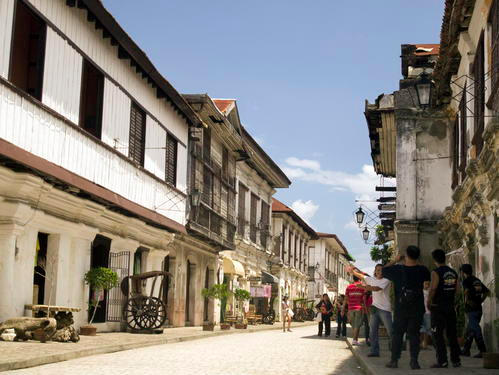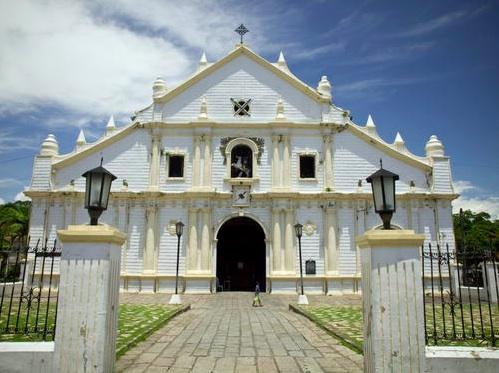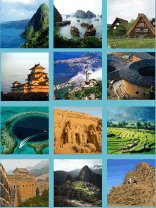Guide 1 – Case Study: Historic Town Of Vigan (Philippines)
Baseline situation
Vigan is an exceptionally intact and well-preserved example of a European trading town in East and South-East Asia. The architecture of the city reflects its historic roots and rich culture in both materials and design, fusing Asian building design and construction with European colonial architecture and planning.
However, prior to its inscription to the World Heritage List (1999), the Outstanding Universal Value (OUV) of the site was in serious danger. Only four years before, in 1995, there was a legacy of political instability, private armies and political violence, out-migration of businesses, and decay of the historic district. Traditional industries were also in decline, the public market was destroyed by fire, and there were barely enough resources to pay the salaries of public officials.

What did they do?
Local government and stakeholders developed a clear vision and action plan based on their application for World Heritage status and conservation as a tool for development. The plan had four key objectives.
Strategic priorities
- Strengthen the sense of identity and pride of the citizens in their historic city – grow their confidence and knowledge.
- Embed the approach into long-term policy and management of the city – so short-term political changes do not disrupt the momentum.
- Forge local and international linkages – learning from other historic cities and securing support for progressive changes from the Spanish government for the master planning process, as well as working with local universities to tap into extra resources and research capacity. These partnerships help deliver where resources are limited.
- Develop Vigan as a tourism destination that enriches and conserves the people’s core values and traditions, as well as sustaining their livelihoods.
What worked?
The city invested in a programme of research and education across the city. This focused on the city’s history, traditions, arts, culture, and industries through brochures, e-books, films, newsletters, coffee table books, postage stamps, children’s textbooks about the city, a website for local people and visitors, and support for community organizations. Residents and property owners were given conservation guidelines (in a manual published every year) that set out the appropriate uses of ancestral houses and other built structures. Street signs in the historic quarter are now made from local clay, enhancing the local distinctiveness; properties and the public realm were restored; and administration set aside 1% of budget for arts, culture and tourism investment.
There was a focus on community needs as a priority – this included measures to provide clean water to villages, solid waste systems, focus on health and sanitation, and developing roads to villages so that they could be accessible for tourism and other economic activities. Conservation craftspeople were trained and accredited, traditional industries, such as jar-making and weaving, were also incorporated into the school curriculum.
A cultural mapping analysis study was carried out with the University of Santo Thomas to guide conservation efforts, and also to identify gaps in the offer for tourists. This led to identification of need for new products and experiences such as a river cruise, children’s museum, conservation complex (housing a training centre, conservation laboratory, research library, conservation materials depot, product development centre, and accommodation), and rural theme park to showcase Ilocano culture. The mappings also highlighted the need to find better ways to enable visitors to experience and understand the city’s heritage. The city created six festivals to enhance the visitor experience and benefit local people, and the local government created an environment in which the private sector could thrive and develop a range of other attractions and services.
What was tough?
Measures to protect the historic quarter were not always popular with the property owners of residents – passing of local conservation laws that defined the boundaries of the protected historic areas, specifying the core and buffer zones. A Conservation Council was created to streamline building permits in the historic district – restrictions of how people manage/use properties were initially unpopular.
How did they get buy-in?
It was key to focus on the things people needed most as priorities – better roads, clean water, waste systems, business opportunities, and better education. It was also important to marry the needs of the community (particularly of the poorest members of the community) with developing the infrastructure to enable tourism development.
What are the results?
- Vigan is now a bustling city with a growing economy.
- Visitor numbers have climbed from 76,000 in 2009 to 335,000 in 2012.
- The poverty rate has fallen from 45.5% in 1995 to 9% in 2013.
- The city finances have recovered and now stand at 292 million Pesos (up from 27 million in 1995).
- Health and education rates have improved markedly.
- The heritage-led regeneration strategy has enabled the city to invest in a range of other facilities for the people of the city, including two new public high schools and one elementary school; a new public market; a slaughterhouse; a new beach resort; internet access for many people across the city; recycling facilities for solid waste, paper and plastic; a TV network for the city; training programmes for more than 5,000 artisans; and a poverty relief programme.
- Conservation challenges remain as a changing and economically thriving city creates tensions about the uses of old properties and spaces – some properties remain in a state of disrepair and increase in traffic creates problems.
- Vigan campaigned for and was reinstated as a city in 2001.
- It was also recognized by UNESCO for Best Practice in World Heritage site management in 2012.
What lessons can others take from this?
Vigan has been transformed through a process of understanding its heritage tourism potential, developing an action plan, and by the delivery of that action plan through good governance that has delivered on people’s everyday needs and aspirations, while also taking seriously the need for robust conservation of the historic fabric.
To learn more, visit Vigan City's official website or the UNESCO World Heritage website for details on their Best Practice recognition.




